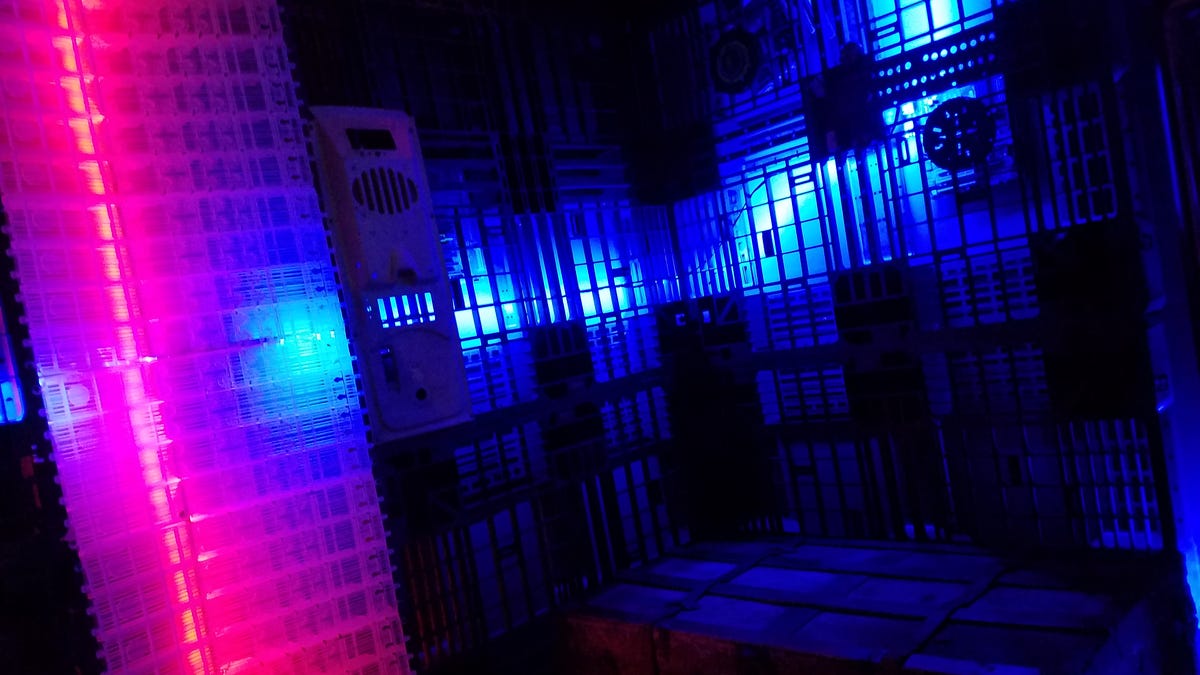Trapped in a reactor, we're playing with toys until they throw us out
One way to humanize modern technology? Get trapped in a room with it and try to escape. A "future technology" game leaves us ready to hug our Roombas.

They're in the news every day: drones, 3D printing and other technologies now changing everything from medicine to warfare and the global refugee crisis. But many of these aren't part of everyday life yet, even in Silicon Valley.
Escape the room? We didn't want to leave.
CNET's recent VR Day brought virtual reality into the hands of hundreds of curious people, and Reason's Future Technology Escape Room here in San Francisco has a similar goal: to let people try new technology for themselves and learn to love it. While also trying not to fry to death in a sabotaged reactor.
Room escape games typically involve grouping with friends and strangers to solve puzzles requiring general knowledge, dexterity and communication skills. Since my untimely death in SCRAP's Time Travel Lab in 2014 I've also failed to escape from a moon base, a toy workshop and a jail, though it's always been awfully close.
The Future Technology reactor plot felt more on theme than the other escapes I've played. There was less wondering "Why cryptograms in a moon base?" and more "So that's what happened! OK, next step..."
When we visited Reason's escape room on Friday, my CNET co-workers and I enjoyed the "sciencey" setting and playing with gadgets like a toy drone; my teammates mostly picked watching the 3D printer as their favorite, while for me virtual reality was the highlight.
I'd always assumed people using VR headsets looked vulnerable and even ludicrous. But watching my colleague Christine swiftly and confidently rifle an invisible room only made me respect her more. And I'd had no idea how fun VR is. Trying on the headset myself later, suddenly I was shrieking with laughter, using the hand paddles to knock stuff over at random and wishing everyone could be in there with me. (New life goal: play Star Trek: Bridge Crew.)
The Future Tech game is also designed for team building, and that worked surprisingly well too. I'd known our group was great to begin with, but I still came out feeling more trust and respect for everyone -- from the noob who led like a pro, to the quiet investigators who found the questions to ask and the controls to use, to the teammate who solved a puzzle requiring two or three people...by herself. After Reason's post-game team assessment we ended up in a group hug that nearly sucked in an old man nearby on the sidewalk. He escaped just in time.
Much like Pokemon Go, thinking through a suspenseful task together brings some of the thrill of team sports to those of us who mostly live in our heads. Maybe that's part of why escape games have gotten popular worldwide in the last few years.
Reason, a three-person startup that launched its escape room a month ago, says its current visitors are mostly fellow startups and companies like Google and Twitter, but traditional escape game fans are coming too. At $480 for 2 hours, Reason's game is expensive, but innovative and well-designed, and I definitely recommend it if you're in the San Francisco Bay Area.
And entrepreneurs everywhere, keep thinking up creative ways to make the technology coming into our lives less remote and more joyful. Some days it looks more Skynet than Star Trek, but we've all got to embrace the future. Maybe even with a group hug.

